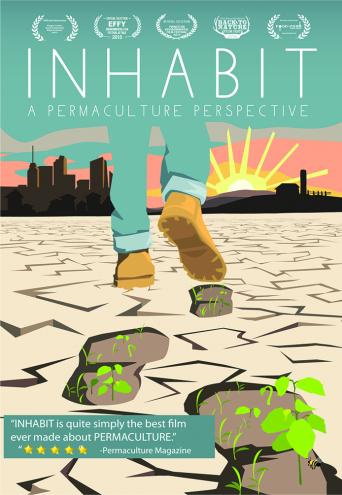Movie's Inspiration: Listen to the Land
These days it is difficult to find sunshine when every day there is another political catastrophe. That is why the movie “Inhabit” is so refreshing, a testament to the human spirit.
The movie, sponsored by Weavers Way at the Ambler Theater last month, was a series of portraits of folks who practice permaculture. Each person, male and female, black and white, interpreted permaculture slightly differently, but each demonstrated a respect for the land by creating a sustainable garden or other endeavor that worked with nature. In contrast to our standard agricultural history, where humans attempt to show dominance over nature, permaculturists listen to the land and take direction from nature. It is a positive philosophy, creating good, not just doing less harm.
The notion of permaculture portrayed in “Inhabit” was developed by David Holmgren and Bill Mollison, who define permaculture as permanent culture. This was illustrated by Mark, who changed the slope of the land so that water would funnel into areas with trees and plants. He claimed this natural watering system would enable the garden to flourish for a thousand years.
By selecting plants based on how they behave in their natural setting instead of forcing growth for the convenience of people, labor is minimized and the produce is plentiful.
“Inhabit” highlights how humans behave as though we are separate from nature. We build cities and suburbs as if nature were irrelevant. Some of those interviewed actually lived in suburbs. Rather than having lawns, these urban farmers demonstrated how one can have a productive miniature forest of plants on a very small plot. One man in Massachusetts was feeding his family on a tenth of an acre. Another installed a composting toilet in his house and used the nutrient-rich waste for plants. Large roof gardens grow in New York City. In Harlem, vegetables and fruit trees were planted in a park so that neighbors could enjoy the fruits of their labor and have the garden as an integral part of their community.
Some raised animals to supplement their gardens, including ducks and chickens, because the ducks eat slugs and the chickens eat insects so that their plants can stay bug and pesticide free. Others used pigs and sheep to break down the vegetation and fertilize the land. As the permaculturists say, “We have all we need around us in Nature.”

